I am trying to make the following bit of code easier to maintain. I am not a web developer so bear with me. I think the following approach is appropriate.
I would like to dynamically add content and attributes to an html file using either javascript or jQuery. The items could reside in a .csv or .json (or something else?) file.
Given content like this
<div class="filtr-container">
<div class="col-12 col-sm-6 col-md-4 card filtr-item" data-category="cat-1" data-date="2018-02-09">
<div class="card-inner-border box-shadow">
<a href="address-1.html">
<img class="card-img-top rounded-top" src="./images/image-1.jpg" alt="img-2-alt">
</a>
<div class="card-body">
<h5 class="card-title">Title-1</h5>
<p class="card-text card-desc">
This is a description for title-1 content.
</p>
<a href="address-1.html">
<button type="button" class="btn btn-sm btn-outline-secondary">View</button>
</a>
<p class="card-text">
<small class="text-muted">Last updated February 2, 2018</small>
</p>
</div>
</div>
</div>
<div class="col-12 col-sm-6 col-md-4 card filtr-item" data-category="cat-2, cat-3" data-date="2018-02-14">
<div class="card-inner-border box-shadow">
<a href="address-2.html">
<img class="card-img-top rounded-top" src="./images/image-2.jpg" alt="img-2-alt">
</a>
<div class="card-body">
<h5 class="card-title">Title-2</h5>
<p class="card-text card-desc">
Here is a long description for title-2 content.
</p>
<a href="address-2.html">
<button type="button" class="btn btn-sm btn-outline-secondary">View</button>
</a>
<p class="card-text">
<small class="text-muted">Last updated February 14, 2018</small>
</p>
</div>
</div>
</div>
<!-- MANY MORE CARDS / ITEMS ... -->
</div> <!-- End of filtr-container -->
I think we could abstract the details into something like this (.csv)
item-id,title,description,categories,address,image,image-alt,update
1,Title-1,This is a description for title-1 content.,cat-1,address-1.html,image-1.jpg,img-1-alt,2018-02-09
2,Title-2,Here is a long description for title-2 content.,"cat-2, cat-2",address-2.html,image-2.jpg,img-2-alt,2018-02-14
What's a nice approach of attack for using `javascript` or `jQuery` to add this content from the `.csv` or `.json` file?
A few concerns:
- The headers of the
.csvwill not match verbatim (e.g.<p class="card-desc">aligns with the.csvheader ofdescription) - There could be embedded comma-separated items (e.g. item 2 has categories
cat-2, cat-3so it gets quotes"in the.csv-- maybe.jsonwould better (?) or perhaps its a non-issue) - If possible can we reuse the
dateitem for bothdata-date=and the final piece of text<small class="text-muted">which converts the date intoLast updated month-name-long, dd, yyyyinstead ofyyyy-mm-dd. - Some attributes are partial references (e.g. the src for an image is just the final part of the path; stated as
image-1.jpgin the.csvnot./images/image-jpg).
To hopefully help make this feel less complicated, here's a picture with the highlighted elements that could be "referenced" from the .csv file.
To me this feels like:
- Read in the .csv file.
- For each item in the .csv file, append objects to
$(".filtr-container")with the shell layout...
But I'm lost when it comes to the particulars or if that's an appropriate approach.
